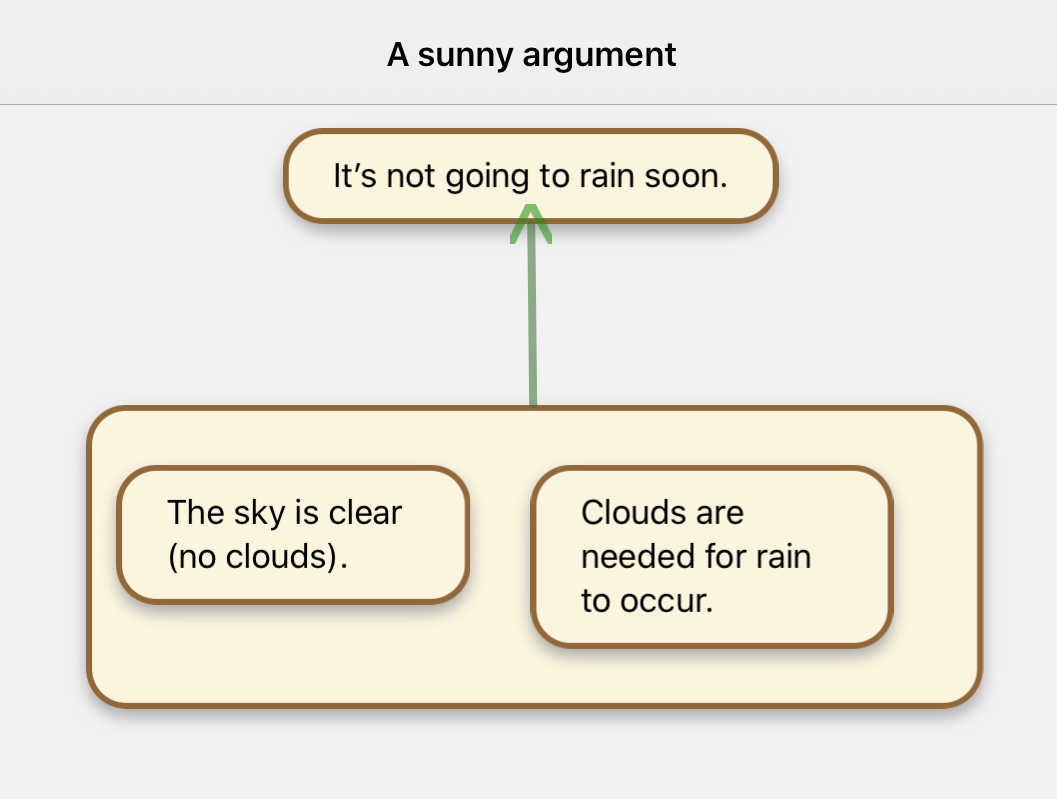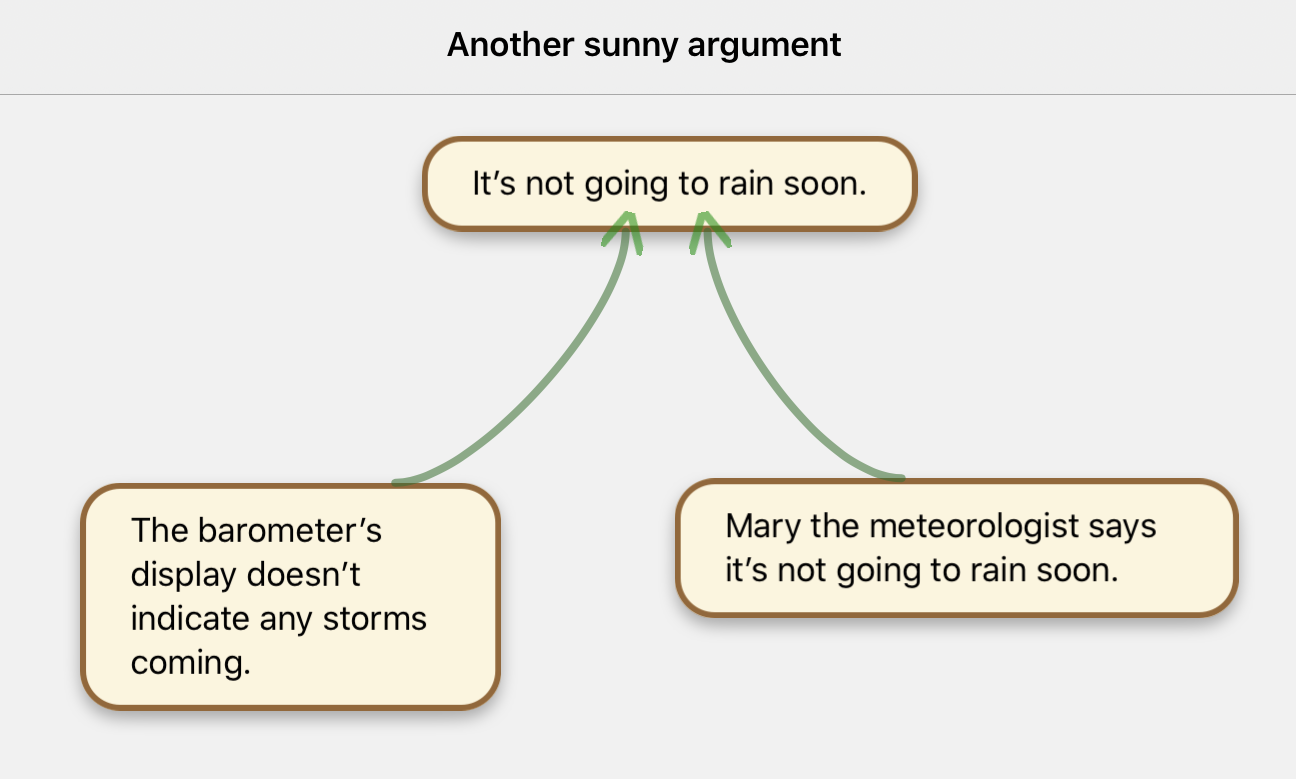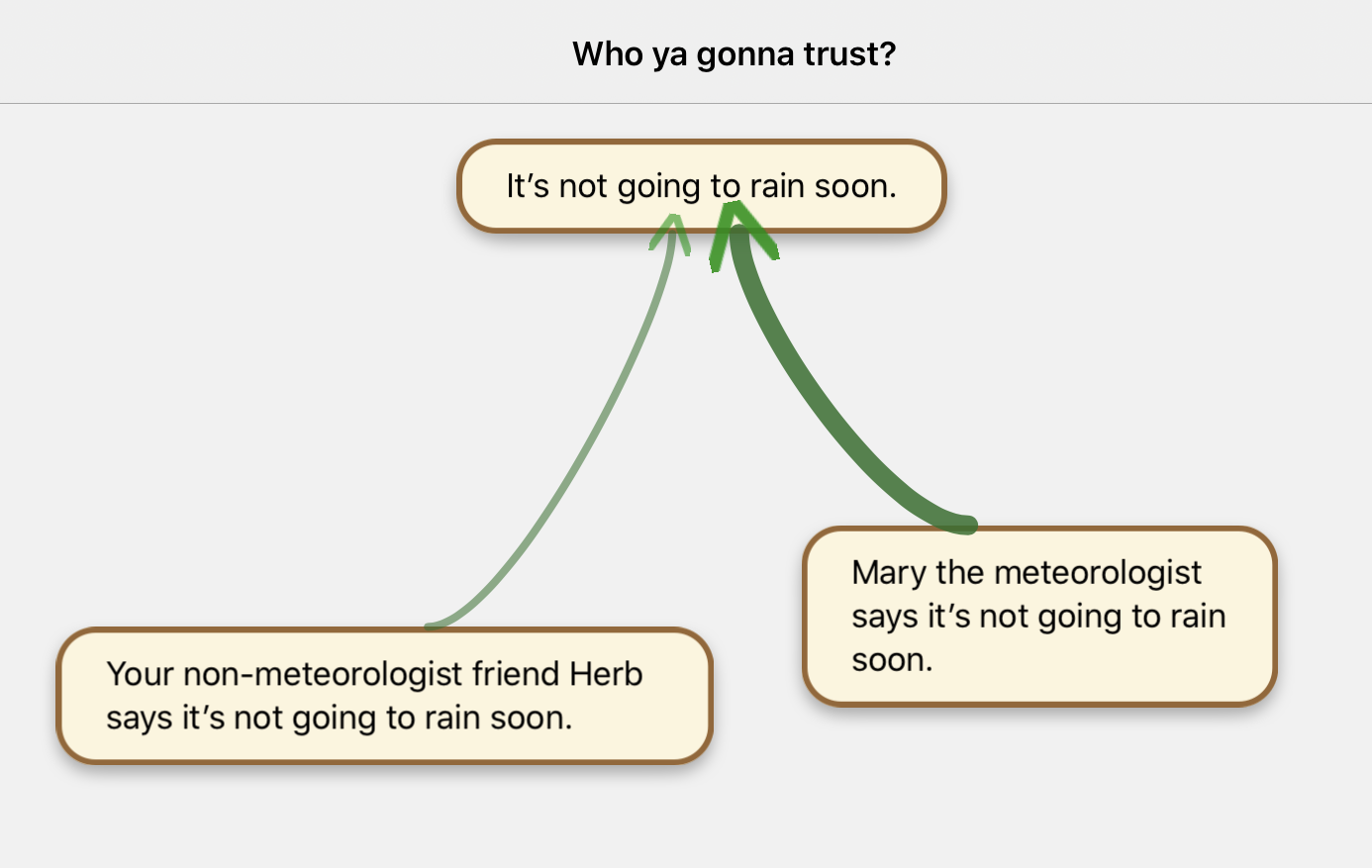A brief introduction to argument mapping
Welcome to the wonderful world of argument maps! An argument map is a visual depiction of an argument, which is a line of reasoning in favor of a conclusion. Each “premise”— each separate claim— in the argument is represented in the map as a “claim bubble.” The map as a whole shows how the premises combine together to support the conclusion. Here’s a sample argument map showing how two claims can work together to support the conclusion:

The conclusion is at the top of the map, with the premises under it, reinforcing in a visual way the idea that the premises help support the conclusion.
Premises working together to support a conclusion
The green arrow shows that the premises support / are "in favor of” the conclusion. Notice that the claims are working together to support the conclusion. Knowing that there are no clouds in the sky is not enough on its own to know that it won’t rain soon— we also have to know that clouds are needed for rain to occur.
ArguMap makes it easy to group and ungroup claims. For more info about ArguMaps’ claim grouping features, see this description of ArguMap’s unique features.
Premises working separately to support a conclusion
In addition to working together in support of a conclusion, premises can sometimes work separately in support of a conclusion. Here’s an example of such an argument:

Unlike in the previous argument, neither claim requires the other to support the conclusion.
Differences in premises’ strength of support for a conclusion
While various premises can provide reasons in favor of a conclusion, those premises may differ in the strength of the reasons they provide in favor of the conclusion. Argument maps can depict that difference in strength with thicker connectors signifying stronger reasons and thinner connectors signifying weaker reasons, as can be seen in the following map:

What a meterologist says is a stronger reason for the conclusion than what a non-meteorologist friend of ours says.
ArguMap makes it easy to depict the relative strength of premises in support of a conclusion. For more info about ArguMaps’ ability to show stronger or weaker reasons, see this description of ArguMap’s unique features.
Claims challenging other claims
Sometimes claims can offer a challenge— an objection— to one or more of the premises of an argument. Here’s an extension of the argument map above that depicts such an objection.

Notice how we can use a different type of connector— different in color (red) and solidity (dashed)— to depict an objection about what Mary said.
ArguMap makes it easy to create both supporting and challenging connectors. For more info about ArguMaps’ custom connector-creating functionality, see this description of ArguMap’s unique features.
Claims challenging connections in the argument
Not only can someone challenge a particular premise in an argument, but they can challenge the connection between premises and the argument’s conclusion. These kinds of objection don’t call into question the premises themselves. Instead, they question whether the premises provide adequate support for the conclusion. Here’s a map depicting this kind of “undercutting” objection:

The objection here doesn’t call into question what the barometer says. Instead, it throws doubt on the barometer’s reading providing any good indication of what the weather soon will be.
Congrats! You’ve just learned the basics of argument map-making!
With the concepts and skills you’ve just learned, you can create visualizations of lines of reasoning that will help you wrap your mind more effectively around those arguments. The arguments and maps described above are pretty simple ones, but the concepts described there can be used to craft much more complicated arguments, too.
Be sure to check out the User Guide for ArguMap to learn more about how to use ArguMap to create argument maps. Happy mapping!
For more info, feel free to contact us:
appsolutelyfun@appsolutelyfun.com.
Apple, the Apple logo, iOS, iPadOS, iPhone, iPad, iPod, iCloud, iTunes, Mac, and macOS are trademarks of Apple Inc., registered in the U.S. and other countries.